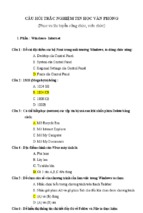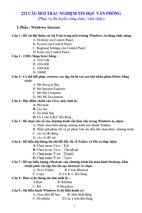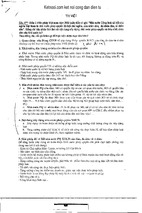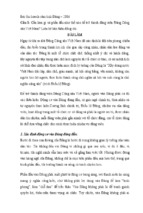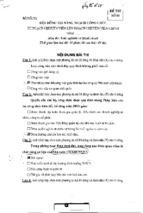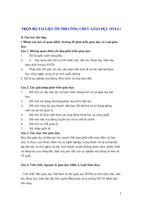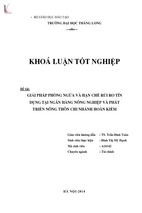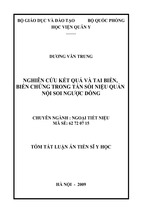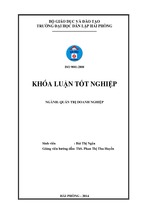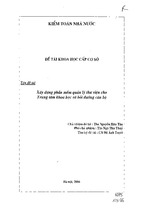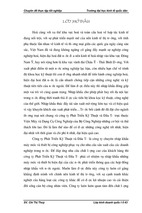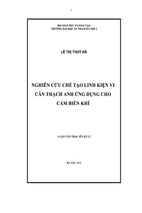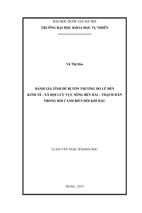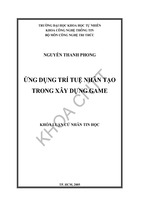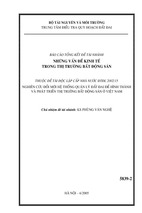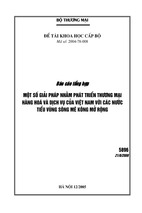This book illustrates the ways that cognitive linguistics, a relatively new paradigmin language studies, can illuminate and facilitate language research and teaching.The first part of the book introduces the basics of cognitive linguistic theory in away that is geared toward second language teachers and researchers. The secondpart of the book provides experimental evidence of the usefulness of applyingcognitive linguistics to the teaching of English. Included is a thorough review ofthe existing literature on cognitive linguistic applications to teaching and cognitivelinguisticbased experiments. Three chapters report original experiments whichfocus on teaching modals, prepositions, and syntactic constructions, elements ofEnglish that learners tend to find challenging. A chapter on “future directions”reports on an innovative analysis of English conditionals. Pedagogical aids such asdiagrams and sample exercises round out this pioneering and innovative text.
Cognitive Linguistics
and Second Language
Learning
Theoretical Basics and Experimental Evidence
Andrea Tyler
COGNITIVE LINGUISTICS AND
SECOND LANGUAGE LEARNING
This book illustrates the ways that cognitive linguistics, a relatively new paradigm
in language studies, can illuminate and facilitate language research and teaching.
The first part of the book introduces the basics of cognitive linguistic theory in a
way that is geared toward second language teachers and researchers. The second
part of the book provides experimental evidence of the usefulness of applying
cognitive linguistics to the teaching of English. Included is a thorough review of
the existing literature on cognitive linguistic applications to teaching and cognitive
linguistic-based experiments. Three chapters report original experiments which
focus on teaching modals, prepositions, and syntactic constructions, elements of
English that learners tend to find challenging. A chapter on “future directions”
reports on an innovative analysis of English conditionals. Pedagogical aids such as
diagrams and sample exercises round out this pioneering and innovative text.
Andrea Tyler is Professor of Linguistics at Georgetown University.
COGNITIVE
LINGUISTICS AND
SECOND LANGUAGE
LEARNING
Theoretical Basics and
Experimental Evidence
Andrea Tyler
First published 2012
by Routledge
711 Third Avenue, New York, NY 10017
Simultaneously published in the UK
by Routledge
2 Park Square, Milton Park, Abingdon, Oxon OX14 4RN
Routledge is an imprint of the Taylor and Francis Group, an informa business
© 2012 Taylor and Francis
The right of Andrea Tyler to be identified as author of this work has been
asserted by her in accordance with sections 77 and 78 of the Copyright,
Designs and Patents Act 1988.
All rights reserved. No part of this book may be reprinted or reproduced or
utilised in any form or by any electronic, mechanical, or other means, now
known or hereafter invented, including photocopying and recording, or in
any information storage or retrieval system, without permission in writing
from the publishers.
Trademark notice: Product or corporate names may be trademarks or registered
trademarks, and are used only for identification and explanation without
intent to infringe.
Library of Congress Cataloging-in-Publication Data
Tyler, Andrea.
Cognitive linguistics and second language learning : theoretical basics and
experimental evidence / Andrea Tyler.
p. cm.
Includes bibliographical references.
1. Second language acquisition–Study and teaching. 2. Cognitive grammar.
3. Cognitive learning theory. 4. English language–Study and teaching.
I. Title.
P118.2.T95 2012
418.0071–dc23
2011038110
ISBN: 978–0–415–80249–9 (hbk)
ISBN: 978–0–415–80250–5 (pbk)
ISBN: 978–0–203–87603–9 (ebk)
Typeset in Bembo
by Keystroke, Station Road, Codsall, Wolverhampton
Printed and bound in the United States of America on acid-free paper.
This book is dedicated to my parents, Don and Jean Tyler,
whose love of learning and language set me on my own
path and who provided the morning quiet that allowed
this book to take shape.
CONTENTS
Acknowledgements
ix
PART I
The Basics of Cognitive Linguistics
1 Introduction:Where Have We Been and Where Can We Go?
2 The Basics of Cognitive Linguistics
1
3
28
PART II
Applying Cognitive Linguistics
59
3 Cognitive Linguistics in the L2 Learning Context
61
4 Applying Cognitive Linguistics to English Modal Verbs:
Experimental Evidence
93
5 Applying Cognitive Linguistics to English Prepositions:
Experimental Evidence
130
6 Applying Cognitive Linguistics to Clause Level
Constructions: Experimental Evidence
166
viii Contents
7 Where We Are Now and Where We Might Go in the Future:
Concluding Remarks
214
Appendix A Sample Materials used for Group Work with Masters
of Law Students
224
Appendix B Materials for Tyler, Mueller and Ho (2010b):
Cognitive Group
226
Appendix C Traditional Group Materials
228
Appendix D Traditional Group: Self-instruction Exercises
230
Appendix E A Representative Diagram Explaining Elements
from the Preposition Experiments
231
References
Index
232
246
ACKNOWLEDGEMENTS
This book could not have been written without the assistance, insights, generosity
and encouragement of numerous colleagues, students and friends. I owe special
thanks to Vyv Evans who as a friend, colleague and co-author, has been a constant
source of inspiration and encouragement for many years. His enthusiasm for this
project at its inception and continuing support have been invaluable.
Many graduate students have worked tirelessly with me on all aspects of the
experimental studies that culminated in those presented in this book. Vu Ho and
Charles Mueller deserve special recognition for their intense involvement in
all aspects of the experiments, from developing the materials, to running the
experiments, to the statistical analyses. Yiyoung Kim and Dasha Shakhova were
instrumental in developing earlier versions of experiments on English prepositions.
For all these collaborators, their expertise in mining the Internet and electronic
media in the course of developing the teaching materials has revolutionized my
thinking about what can be done in the development of engaging and effective
teaching materials. Yiyoung’s work on construction grammar has been particularly
important.
Mari Takada and Yiyoung Kim deserve special mention for their collaboration
in organizing GURT 2003 and editing the two volumes which emerged from that
conference. The many conversations, papers and collegial relationships that began
with that conference have been the impetus for much of my work since.
The many students in my classes on cognitive linguistics and the members of
the Georgetown cognitive linguistics reading group have been an endless source
of new ideas and renewed dedication to the CL enterprise. I give special thanks
to Natalia Jacobsen, Hiroshi Takahashi, Vitaly Nikolaev, Olga Liamkina, Akiko
Fujii, Yunkyoung Kang, Suzanne Matula, David Macgregor, Hana Jan, Narges
Mahpeykar and Moon Jung Cheng.
x Acknowledgements
I have had the privilege to work with many outstanding colleagues in the fields
of cognitive linguistics and applied cognitive linguistics. They include Carol
Moder, Marjolijn Verspoor, Susan Strauss, Michel Archard, Nick Ellis and Peter
Robinson. A special thanks to Suzanne Neimieir, Gunter Radden and Martin Putz
for their work on the LAUD conferences and the space they created for me and
other applied cognitive linguists. Other colleagues who have provided vital advice
and consultation are Lourdes Ortega, Diane Larsen-Freeman and Frank Boers.
Over the years many cognitive linguists have been particularly generous with
their encouragement and time: Joe Grady, Mark Turner, Eve Sweetser, Michael
Israel, Ron Langacker, Adele Goldberg, Kenny Coventry and Paul Deanne.
I was very fortunate to be able to collaborate with Craig Hoffman of the
Georgetown University Law Center in creating the English for Lawyers program.
The first two modal experiments were one result of being involved in that
endeavor. Two of the outstanding Georgetown graduate students who worked in
that program were Rebekha Abbuhl and Mika Hama.
Ivy Ip has been a patient and supportive editor. Yunkyoung Kang has been a
dedicated reader and proofreader.
Finally, I want to acknowledge the financial support provided by Georgetown
University in the form of Faculty Research Summer Grants and the Faculty of
Languages and Linguistics Summer Grants programs. The Provost’s International
Collaboration Grant program also provided funding.
PART I
The Basics of
Cognitive Linguistics
1
INTRODUCTION
Where Have We Been and
Where Can We Go?
1. Why Should I Read this Book? No Silver Bullets
Learning a language is one of the most complex accomplishments humans achieve.
We have known for many years that the story of children mastering their first
language effortlessly in a short three- or four-year period is just that, a story.
Research has long established that children learning their first language take at least
eight years in an immersion situation to master many of the more complex grammatical constructions of their language. They generally do not gain productive
control over much of derivational morphology until they are 10 or older. Many
aspects of pragmatics take even longer. Given the length of time and attention
needed for first language learning, it stands to reason that no new model of the
structure of language can radically reduce the difficulty facing adult second
language (L2) learners. However, the task of the adult L2 learner in the instructed
L2 learning situation has been made even more difficult by the fact that important
elements of systematicity that exist in language have not been captured by the
traditional view of language. This view has been the mainstay of both descriptive
and pedagogical grammars that underlie most modern L2 learning research and
English language teaching (ELT) textbooks and materials for the past 50 plus years.
This book introduces a new and very different approach to pedagogical grammar
– a cognitive linguistics approach (CL).1 This approach to L2 grammar and
1 The use of the word “approach” is quite deliberate. Cognitive linguistics is not a
monolithic theory of language. There are a number of contending analyses for various
aspects of language. For instance, in my explication, I primarily focus on Adele
Goldberg’s (1995, 2006) version of construction grammar. However, Croft (2001) and
Bergen and Chen (2005) have developed alternative models of construction grammar.
4
The Basics of Cognitive Linguistics
lexis does not offer an easy, guaranteed shortcut for helping L2 students become
near-native speakers. What it does offer is a different understanding of the nature
and organization of language, one which is more accurate, explanatory and more
complete than the traditional view.
The traditional view treats language as a system separate from other cognitive and
social abilities, an entity separate unto itself. Being an isolated system, disconnected
from general cognitive processes and conceptual structure, language has traditionally
been understood as operating under its own set of rules and properties, most of
which have been assumed to be largely arbitrary, idiosyncratic and mysterious. This
view tends to represent language as a set of rules (often attempting to represent
“alternating,” “synonymous” sentence patterns, such as so-called dative alternation
or active–passive alternation, as transforms of a basic pattern), a list of vocabulary
items that plug into the rules, and a list of exceptions to the rules. The approach to
language learning that accompanies this view of language emphasizes the need for
the learner to master the rules and memorize the exceptions.2
A CL account differs radically from the traditional perspective by emphasizing
that language is best understood as a reflection of general cognitive processes, the
highly social nature of humans as a species, and the unique ways that humans
experience and interact with the physical world. This last point is the notion of
embodied meaning. In addition, CL emphasizes the recurrent organizing
principles that are found at all “levels” of language. So, for example, in the traditional approach, metaphor is understood as only pertaining to limited aspects of
non-literal language and is largely treated as outside the domain of systematic
investigation. In contrast, the CL approach treats metaphor (i.e., understanding
entities, actions, or events, in one domain, the target domain, in terms of entities,
Ron Langacker (e.g., 1987/1991) developed cognitive grammar, a fully articulated theory
that focuses on the spatial nature of human thinking, successfully using concepts such as
Focus and Ground to explain basic sentence structure and force dymanics in what
Langacker calls the “action chain” model. Each of these models represents a unique and
important perspective on just how grammar works. However, all these approaches also
agree on certain fundamentals, first and foremost being that syntactic patterns, like all
aspects of language, are symbolic units which consist of form–meaning pairings and,
thus, are meaningful in themselves.
2 With the communicative, focus on form and task-based approaches there has been a
shift in emphasis to implicit learning through rich input, meaning negotiation, and
pushed output. These L2 teaching methodologies do not overtly relate to any particular
model of language and do not overtly attempt to explain the patterns of the target
language. In theory, most learning of the target language takes place implicitly.
However, studies show that most language teachers do offer explanations for the
grammar, and certainly most ELT texts, even those purporting to take a communicative
approach, offer rules. These rules are generally based on the traditional view. It is likely
that the trend of explicit presentation of rules will continue, especially in light of Norris
and Ortega’s (2000) extensive review of the relevant literature which demonstrates that
L2 learners appear to benefit from a combination of both explicit presentation of
grammatical patterns and communicative manipulation of the language.
Introduction 5
actions, or events in another domain, the source domain) as a fundamental aspect
of human cognition, which is pervasively reflected in language.
Under a CL account, the same principles of metaphorical extension, force
dynamics, and sensory perception that account for semantic extension of openclass lexical items, such as grasp and head, and semantic extensions of closed-class
lexical items, such as prepositions, are also central to a systematic, principled
account of verb argument structure and the particular syntactic patterns in which
individual verbs occur. (This will be discussed extensively in Chapter 6.) Relatively
recently, the traditional approach has acknowledged another layer of the language
system which involves functional or pragmatic aspects of language use. Examples
of this layer include politeness formulas and their contexts of use (e.g., in making
a polite request, use could instead of can, Could I ask a favor?); speech act formulas
(such as set phrases for offering an apology or making a complaint); and register
differences (e.g., using sweat in more informal contexts and perspire in formal ones).
While I applaud the language teaching approaches and materials that include
pragmatic and discourse aspects of language use, I reject the notion that pragmatics
should be largely treated as an “add-on,” disconnected from the formal grammatical and lexical structure of the language. Within a CL approach, pragmatic
inferencing is understood as a ubiquitous cognitive process fundamental to how
we interpret the world that surrounds us, one component of which includes
language. CL analyses present pragmatic inferencing as integral to any interpretation of language, to semantic extension and grammatical extension. Moreover,
many aspects of politeness, for instance using could and would, rather than can and
will, turn out to be motivated aspects of a principled system.
As we will see, a significant disadvantage of the traditional perspective is that it
fails to take into account our everyday interactions with and understanding of the
world and their effect on language. One significant consequence of this perspective for pedagogical grammars, upon which ELT teachers rely and ELT textbooks
are based, is that functions associated with distinct grammatical constructions, e.g.,
the full range of different functions associated with tense (e.g., time-reference,
attenuation, counterfactuals, etc.) have been at worst ignored, or at best, presented
in piecemeal fashion, with no indication that these functions are related to one
another and so motivated (see Tyler & Evans 2001a).3 Hence the traditional
grammars fail to inform the L2 researcher and the language teacher of significant
regularities and systematic connections in the language.
This book takes a quite different perspective, one which asks you, as a professional in the area of L2 learning, to set aside your established ways of thinking
3 Criticizing pedagogical grammars for failing to present organized systems, such as the
multiple functions of tense, in a piecemeal fashion should not be taken as criticizing ELT
texts for not presenting students with all aspects of the system in one go, rather than in
a selected and graded fashion. The point is that the researcher and the teacher need to
understand the system in order to make informed choices about appropriate experimental materials, sequencing and teaching materials.
6
The Basics of Cognitive Linguistics
about the nature of language. Rather than thinking about language as a set of rules,
each with a set of exceptions for L2 learners to memorize, the CL approach asks
you to consider the social and physical world you operate in every day, general
human cognitive processes, and the connections between that social–physical
world and the structure of language itself. Here is a simple example: Everyday cooccurrences we observe between the rising level of a river and an increased amount
of rainfall or the rising level of liquid in a measuring cup and an increase in amount
of liquid, turn out to be reflected in language use.
We find many instances of language that literally refer to physical elevation
being used to talk about increases in amount. For instance, in a sentence like The
price of that stock is up, in which the monetary amount the stock is worth is held to
have increased, we find language that literally refers to physical elevation, up, being
used to refer to an increase in a rather abstract area, monetary value. In fact, this
connection is so strongly conventionalized in English that it is often difficult for
us not to talk, and think, about an increase in the amount of something without
talking, and thinking, in terms of an increase in height. The two parameters of our
experience of the external, physical world (quantity and vertical elevation) are
clearly distinct. An increase in amount of liquid can result in a bigger puddle
without resulting in an increase in height; similarly, an increase in amount of
weight can result in an expanded waistline which extends horizontally rather than
vertically. Nevertheless, quantity and physical elevation do correlate with one
another in everyday experience in an extremely tight and recurring fashion. After
all, every time we fill a glass, as the height of the liquid increases so does the
quantity. Returning to The price of that stock is up, the point is prices do not literally
rise in elevation, but we talk about such an increase as if they did. In other words,
we use language that relates to our experience of the physical world to understand
and talk about more abstract notions, such as the increase in value of some stock.
This is a form of metaphor which cognitive linguists calls experiential correlation. (We will discuss experiential correlation in more detail in Chapters 2, 3 and
5). In this example, cognitive linguists call the domain of vertical elevation the
source domain and the domain of the abstract notion amount as the target
domain. The target domain is understood and talked about in terms of the
source domain.
This exemplifies one fundamental way in which language reflects social–
physical experience. In the sentence described above we have seen that up is
interpreted as having a meaning of “more” rather than literally relating to vertical
elevation. The traditional view would represent this non-literal use of up as
idiomatic. In contrast, rather than treating this non-literal, additional meaning as
an exception to be memorized, a CL approach treats such multiple meanings of
lexical items as being systematically related and therefore explainable. No theory
of language can eliminate the need for language learners to memorize a good deal
of vocabulary. However, a CL approach allows us to represent the multiple meanings and uses of lexical items as motivated, that is, reflecting a principled
Introduction 7
pattern. Although understanding the systematic motivation for extensions of word
meaning (through recurrent processes such as experiential correlation) does not
automatically allow the learner to predict which extended meanings the target
language has developed, it does provide a set of principles that can act as a schema
for organizing and acquiring new lexical information. Work in psychology has
long established that humans learn new information more easily and reliably when
they can relate it to established schemas (e.g., Rummelhart, 1981; Wilson &
Anderson, 1986). Presumably once language learners have a systematic, motivated
explanation for meaning extension, it will be easier for them to interpret and
remember related lexical items that they encounter. Importantly, a CL approach
explains much more than the related meanings of lexical items. We will see in the
chapters that follow that a CL approach offers a coherent account of a number of
the most difficult aspects of (English) grammar – from prepositions to modals to
which verbs occur in the double object construction. It also offers insightful
explanations for many functional and discourse patterns, for instance, why
languages tend to use past tense to indicate politeness.
2. Where Have we Been?
Over the past 60 years, there has been a dizzying array of different L2 teaching
approaches. These have often appeared to vary greatly. Such approaches include,
but are certainly not limited to, the audiolingual approach, Total Physical Response,
the functional–notional approach, the generative-based “cognitive” approach,
numerous varieties of the communicative approach and the task-based approach.
These have represented important advances in L2 teaching. For instance, the
audiolingual approach emphasized the use of certain carefully monitored kinds of
question–answer interactions between the teacher and student, repetition by the
student and oral drills of various kinds, all of which were in service of mastering the
accurate production of a particular chunk of language (which involved pronunciation as well as a grammatical structure) before a new grammatical structure
could be introduced. This was an important advance over the grammar translation
approach in that it included spoken, everyday language. However, the learning of
particular language forms was often disconnected from their meaning. In contrast,
the communicative approach has stressed the importance of meaningful communication, rather than focusing on accuracy at the expense of other aspects of L2
learning. Consequently, student–student as well as student–teacher interactions
focusing on goal-directed (i.e., communicative) interactions have been encouraged.
These activities are often based on naturally occurring text or real-world encounters.
However, while the approaches have changed, the view of the nature and
structure of language that underpins these approaches has not. What is remarkable
is that the pedagogical grammar adopted by all these approaches is strikingly similar
and has changed very little over the past 70 years. For instance, when we compare
many of the exercises and explanations of specific grammar points in Lado’s (1957)
8
The Basics of Cognitive Linguistics
book, which exemplifies the audiolingual approach, to those in Azar’s Fundamentals
of English grammar (2002), which takes a strictly descriptive approach, or those in
Larsen-Freeman’s Grammar dimensions (2000), which is oriented with respect to a
communicative and discourse perspective, we find a startling amount of overlap.
In order to illustrate this point let’s take two concrete examples from modern
textbooks which address points of grammar. My purpose here is to illustrate how
such texts are reliant on the traditional view of language. To do this, let’s look at
how prepositions and modals have been treated.
Our first illustration comes from Azar’s (2002) treatment of prepositions in her
Fundamentals of grammar series, which has three levels. The challenge for the
language learner in mastering English prepositions involves at least two aspects.
One problem is learning the many meanings associated with each preposition, as
illustrated for over in the following:
(1.1) a. The lamp is over the table. (above meaning)
b. The teller at the central bank switched the account over to a local branch.
(transfer meaning)
c. The film is over. (completion meaning)
d. The ball landed over the wall, in the neighbour’s garden. (on-the-other
side)
e. She has strange power over me. (control meaning)
f. She has a veil over her face. (covering meaning)
g. The relationship changed over the years. (temporal meaning)
This problem is amplified by the fact that non-spatial uses of prepositions are
ubiquitous in naturally occurring discourse produced by native speakers of English.
Thus, any time language learners venture outside the realm of the ELT text they
will encounter this multiplicity of meanings.
A second major problem in mastering prepositions involves the complex ways
they combine with verbs to create phrasal verbs. The following represent a small
subset of the range of phrasal verbs associated with over as illustrated in the Collins
cobuild dictionary of phrasal verbs (1989):
(1.2) a.
b.
c.
d.
e.
ask over, flick over, roll over (movement and position)
boil over, drool over, cry over (overflowing and overwhelming feelings)
fall over, keel over, knock over (falling and attacking)
cloud over, frost over, paper over (covering and hiding)
brood over, pour over, think over (considering and communicating)
Azar (2002) approaches this highly complex area by introducing a limited subset
of the prepositions through diagrams, which represent the spatial relations coded
by each preposition, e.g., a picture of an object located higher than another to
illustrate over (the “above” sense in 1.1a, and accompanying example sentences.
Introduction 9
This introductory material is followed by a series of fill-in-the-blank sentences, in
which the learner is asked to supply the appropriate preposition. At more advanced
levels, more prepositions are introduced through illustrative sentences without
explanation of their individual interpretations. Prepositions are often presented in
sets, e.g., by, near, beside, with the information that they share the same meaning
for certain of the spatial uses. This representation is only roughly accurate even for
spatial meanings, e.g., one can reside near a city without residing beside the city,
and highly problematic for additional meanings, e.g., We decided to travel by car, but
not near car or beside car. At the most advanced level, over 50 prepositions appear
in a single list followed by several pages of fill-in-the-blank exercises. Except for
the temporal uses, the non-spatial meanings of the prepositions, e.g., the transfer
meaning and the completion meaning for over, etc., are not addressed. The explanation for temporal uses is not presented as being systematically related to the
spatial use. Thus, language learners (and the L2 professional) are presented with a
quite incomplete and even inaccurate picture of the many meanings that native
speakers regularly assign to prepositions. Moreover, learners are not provided any
systematic overview or tools of analysis to help them as they encounter natural
discourse which inevitably contains numerous instances of non-spatial meanings
of prepositions, as well as contexts in which the meanings of certain prepositions,
e.g., by, near, beside, appear to converge and other contexts in which the meanings
of the same set of prepositions appear to diverge.
Phrasal verbs are introduced in completely different sections, without reference
to the meaning of the preposition participating in the phrasal verb construction,
and in the form of idiosyncratic pairings whose meanings must be memorized.
Again, fill-in-the-blank sentence completion exercises are provided to give the
learner practice linking the form with its meaning.
As we will see, a CL approach treats the many meanings associated with each
preposition as being systematically motivated and grounded in basic human
experience of the physical world. This perspective allows for a more motivated,
organized representation of the network of meanings associated with each
preposition. The representation does not relieve learners of all memorization, as
the particular spatial system developed in their L1 will inevitably vary from that of
English and those differences will have to be learned. For instance, learners whose
native language is Spanish will have to learn that spatial relations represented by
en are represented by both in and on in English. However, the teacher, armed with
an accessible account of the systematic meaning differences between in versus on,
can help provide the L1 Spanish learner with learning strategies beyond memorizing lists of uses. Based on a more complete analysis of the many meanings associated with each preposition, the CL approach is also able to provide a systematic
account of a large percentage of phrasal verbs.
Modal verbs are another particularly challenging area of English grammar. Like
prepositions, each modal seems to have a range of meanings and uses. Consider
the uses of the two modals can and could:
10
The Basics of Cognitive Linguistics
(1.3) Can you go to the library this afternoon?
a. My mother just said I could go to the library. (permission)
b. My mother just said I can go to the library. (permission)
Here can and could are basically interchangeable.
In contrast, in the example in 1.4b, could is acceptable but can is not because
could is functioning as the past tense of can:
(1.4) a. They say Bill can cook better than his wife. (ability + present)
b. They say Bill could cook better than his wife. (ability + past time)
In 1.5 can and could both relate to ability and again seem interchangeable:
(1.5) How many sandwiches should we take?
a. I can easily eat two sandwiches for lunch.
b. I could easily eat two sandwiches for lunch.
However, when speaking of generic truths, can is acceptable but could sounds odd:
(1.6) a. Camels can survive in arid conditions.
b. Camels could survive in arid conditions.
Can and could can also assume a possibility meaning:
(1.7) a. Even an expert driver can make mistakes.
b. Even an expert driver could make mistakes.
In other contexts involving predictions based on inferences could works, but can
does not:
(1.8) a. I’ve just seen the lights go on; John could be home.
b. *I’ve just seen the lights go on; John can be home.
When indicating a hypothetical situation, in certain instances, commonly
referred to as the Conditional uses, can and could can both appear:
(1.9) a. If you can meet me at the corner, I can/could give you a lift.
b. If you could meet me at the corner, I can/could give you a lift.
However, in other hypothetical situations, only could is acceptable:
(1.10) a. If turtles could fly, they could travel a lot faster.
b. *If turtles can fly, they can travel a lot faster.
These last examples are commonly labeled the Unreal or Counterfactual uses.
Introduction 11
In addition, there is a difference in terms of what has been called “tentativeness”
or politeness, with could being understood as being more polite.
(1.11) a. Could I borrow some money?
b. Can I borrow some money?
Clearly, sorting out the complex patterns of usage involved with the pair can
and could presents a real challenge for both the language learner and the teacher,
who must accurately present the complexity while offering an accessible account
which emphasizes any points of systematicity. As if this were not enough, when
the entire modal system is taken into account the situation is even more complicated, as the exact pattern exhibited by can and could is not replicated. For
instance, while could constitutes the past time form of can in certain contexts, might
and should do not currently form the past time counterparts of may and shall.
Moreover, the interpretation of various modals changes when they occur in
negation and interrogative constructions.
A representative approach to the teaching of modals is provided in Werner
and Nelson’s (1996) Mosaic two: a content-based grammar. Like many others, they
categorize the modals in terms of a number of broad functions or speech acts. For
instance, may/might/could are represented as relating to ability and possibility;
may/can as relating to granting permission; may/could/can as relating to asking for
permission; would/could/will/can as relating to asking for assistance. Other categories
include advice, suggestions, lack of necessity, prohibition and expressing preferences. An example of Werner and Nelson’s presentation, which concerns how
modals are used for advice and suggestions, is given in Table 1.1.
TABLE 1.1 Modals Used to Give Advice and Make Suggestions
Advice and Suggestions
Present
Had better
Should
Ought to
You had better study more
You should try harder
You ought to go
Past (Unfulfilled)
Should not have
Ought not to have
You should (not) have helped us
You ought (not) to have gone earlier
Present
Could
Might
You could hire a tutor
If your cold doesn’t get better, you might see a doctor
Past (unfulfilled)
Could (not) have
Might (not)
You could (not) have gotten up earlier
You might (not) have gotten up earlier
Source: after Werner and Nelson (1996, p. 163).
12
The Basics of Cognitive Linguistics
Students are given practice manipulating the forms through short dialogues and
fill-in-the-blank exercises. A consequence of this approach, in which a wide range
of meanings represented by modals are presented in relation to isolated speech acts,
is that there is no attempt to relate the various meanings. Moreover, gaps in the
paradigm are introduced without any explanation; notice, for instance, that the
appearance of “had” (typically understood as the past tense form of have) in the
present form of “had better” goes unexplained as does the absence of a past form
with “had better.” Hence, any systematicity between the multiple functions
remains unexplored. This results in a fragmented picture of the lexical class in
question, leaving the learner with the impression that the various uses are arbitrary
and with the learning strategy of rote memorization.
Perhaps even more problematic is the inaccuracy introduced by presenting the
modals in this particular paradigmatic fashion. Such broad functional categorizations lead to the inaccurate impression that the modals within each category, as in
the examples from Werner and Nelson, had better, should, ought to, could and might,
are largely interchangeable. That this is inaccurate is illustrated in the following
sentences, in which the modals have clearly distinct interpretations:
(1.12) a. You could use an ATM card instead of traveller’s checks.
b. You should use an ATM card instead of traveller’s checks.
c. You might use an ATM card instead of traveller’s checks.
The informed teacher, of course, might be able to make the functional approach
work, but this presupposes an accurate and systematic understanding of the modal
system. Unfortunately most pedagogical grammars, even the more recent ones,
simply do not provide such an overview.
In contrast, a CL approach offers an analysis of the modals based on general
concepts from the realm of force dynamics, such as force used to propel motion
along a path and barriers to forward motion. An analysis of modals grounded in
force dynamics allows CL to offer not only a principled, explanatory representation
of the semantics of these modals, but also a more accurate and complete one. Thus,
a CL approach provides a motivated explanation for the patterns of usage that is
not captured by the overly general functional representation. We will consider this
more thoroughly in Chapter 5.
Celce-Murcia and Larsen-Freeman (1999) provide an important exception to
this general pattern among pedagogical grammars. They offer several important
insights into modal usage by attempting to sort out some of the meaning differences associated with each of the modals. They do so primarily by providing scales
of strength in both root and epistemic uses. However, even their more sophisticated account relies primarily on unmotivated lists and fails to give a full accounting
of the semantics of each of the modals.
As we will see in Chapter 4, by grounding its analysis in general cognitive
principles, such as embodied experience and force dynamics, a CL approach
- Xem thêm -

